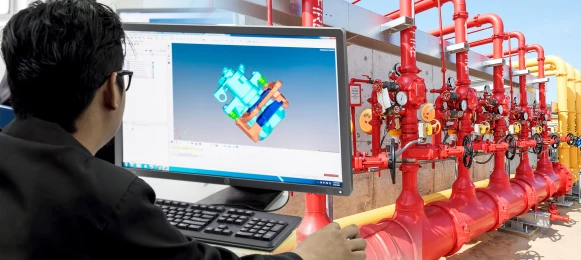In today’s fast-paced construction industry, small builders are facing increasing pressure to deliver projects efficiently while maintaining high standards of service. With tight schedules and complex demands, outdated operations and maintenance (O&M) documentation often adds to the strain. Relying on traditional paper-based manuals can lead to inefficiencies, lost time and frustrated clients. However, a technical revolution is changing the game for builders of all sizes, as they move towards the digitisation of all things O&M.
For small builders, the move to digital is not just a modern upgrade - it’s an opportunity to unlock new and better ways of doing things to meet evolving client expectations. Digitising O&M documentation is simpler than many people think and the benefits can be transformative, delivering improved compliance and helping small builders to compete in an increasingly tech-driven market.
Operations and Maintenance (O&M) documents provide critical information about a building’s systems, components and maintenance requirements. These documents typically include specifications, warranties, safety information and user manuals for various building elements such as HVAC systems, electrical wiring and plumbing fixtures.
For small builders, creating and managing these documents is a vital part of project handover, ensuring clients have the information needed to maintain their properties effectively. However, when these documents are stored in paper format, they can become cumbersome to manage, prone to loss and challenging to update.
Paper O&M manuals have been a longstanding tradition in construction, but they come with inherent limitations. Paper manuals require physical space and can quickly become disorganised, especially when managing multiple projects. Locating specific information in a stack of paper documents can also be time-consuming and inefficient.
In a worst-case scenario, paper documents can easily be damaged by water, fire or mishandling, leading to potential loss of vital information. Making changes or adding updates to paper manuals is also a tedious process that often results in inconsistencies. For small builders juggling multiple projects and tight deadlines, such inefficiencies can translate into lost time, higher costs and frustrated clients.
Why go digital?
Digitising O&M documents offers a wide range of benefits that can help small builders work smarter, not harder. Digital O&M files can be stored in cloud-based systems, making them accessible anytime and from anywhere. This eliminates the need to sift through piles of paper and ensures critical information is always at your fingertips.
Builders, clients and maintenance teams can quickly access the exact data they need, improving project efficiency.
Digital files are also easier to categorise, search and retrieve. Builders can organise O&M manuals by project, client or system type and include keyword search functions for instant access to specific sections. Providing clients with a digital O&M manual further enhances their experience by offering convenience and professionalism. They can access user-friendly files from their devices, ensuring they have the necessary information to maintain their property with ease.
While digitisation may have an upfront cost, it significantly reduces expenses associated with printing, storage and manual updates. Over time, these savings can contribute to a healthier bottom line. Switching to digital files also aligns with environmentally friendly practices by reducing paper waste and energy consumption associated with physical document storage.
For small builders, compliance with regulations and building standards is a non-negotiable aspect of the job. Digital O&M documentation offers significant advantages in this area with files that can be easily updated to reflect new regulations or requirements, ensuring ongoing compliance.
In case of an audit or inspection, digital files also provide clear and well-organised documentation, reducing the risk of penalties. Furthermore, by ensuring that critical information is always accessible and up-to-date, digital documents help minimise errors and potential liabilities.
Construction projects often involve multiple stakeholders including architects, engineers, contractors and clients. Digital O&M documents facilitate seamless collaboration by enabling real-time sharing and updates. For example, builders can share digital files with clients, allowing them to access documents as soon as they are completed. Maintenance teams can receive real-time updates about equipment specifications or service schedules, reducing delays and miscommunication.
How to transition to digital
Converting paper O&M manuals into digital files may seem like a daunting task, but with the right approach, it can be a smooth and rewarding process. Because the digitisation process often feels overwhelming, many small builders choose to partner with a specialist in document digitisation like us. We provide bespoke solutions that align with each business need. We also show small builders how to use the new digital system effectively by providing training on how to access, update and share files to maximise the benefits of digitisation.
For small builders, the move to digital O&M documentation is not just about improving current workflows - it’s an investment in the future. Over time, digital files can enhance the scalability of a small business, allowing it to manage more projects with ease. Client retention is improved by offering a superior handover experience. It also strengthens a company’s brand reputation as a forward-thinking, professional builder.
As the construction industry continues to evolve, adopting digital practices will become increasingly essential. Digital O&M documentation helps small builders to adapt to emerging trends, such as smart building technologies and data-driven construction management. It also helps them stay ahead of competitors by offering clients innovative and efficient services that set them apart from the rest.
Digitising O&M documents is no longer a luxury - it’s a necessity for small builders seeking to thrive in a competitive market. The benefits, from improved organisation and accessibility to enhanced compliance and client satisfaction, far outweigh the initial investment.
At AJ Digital, we understand the challenges small builders face and are committed to helping businesses transition to digital solutions seamlessly. Whether you are just starting your digitisation journey or looking to optimise an existing system, we are here to support you every step of the way.



